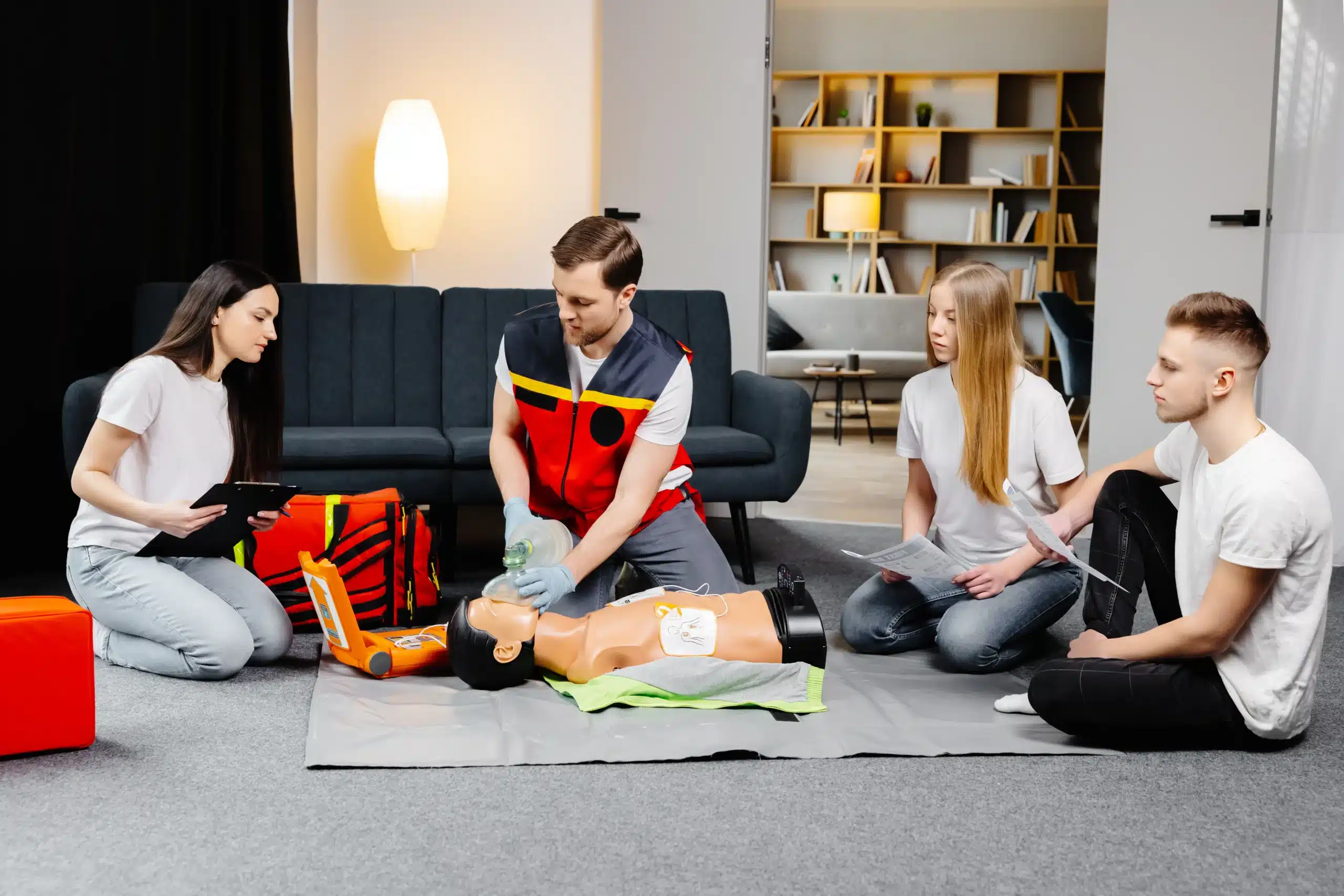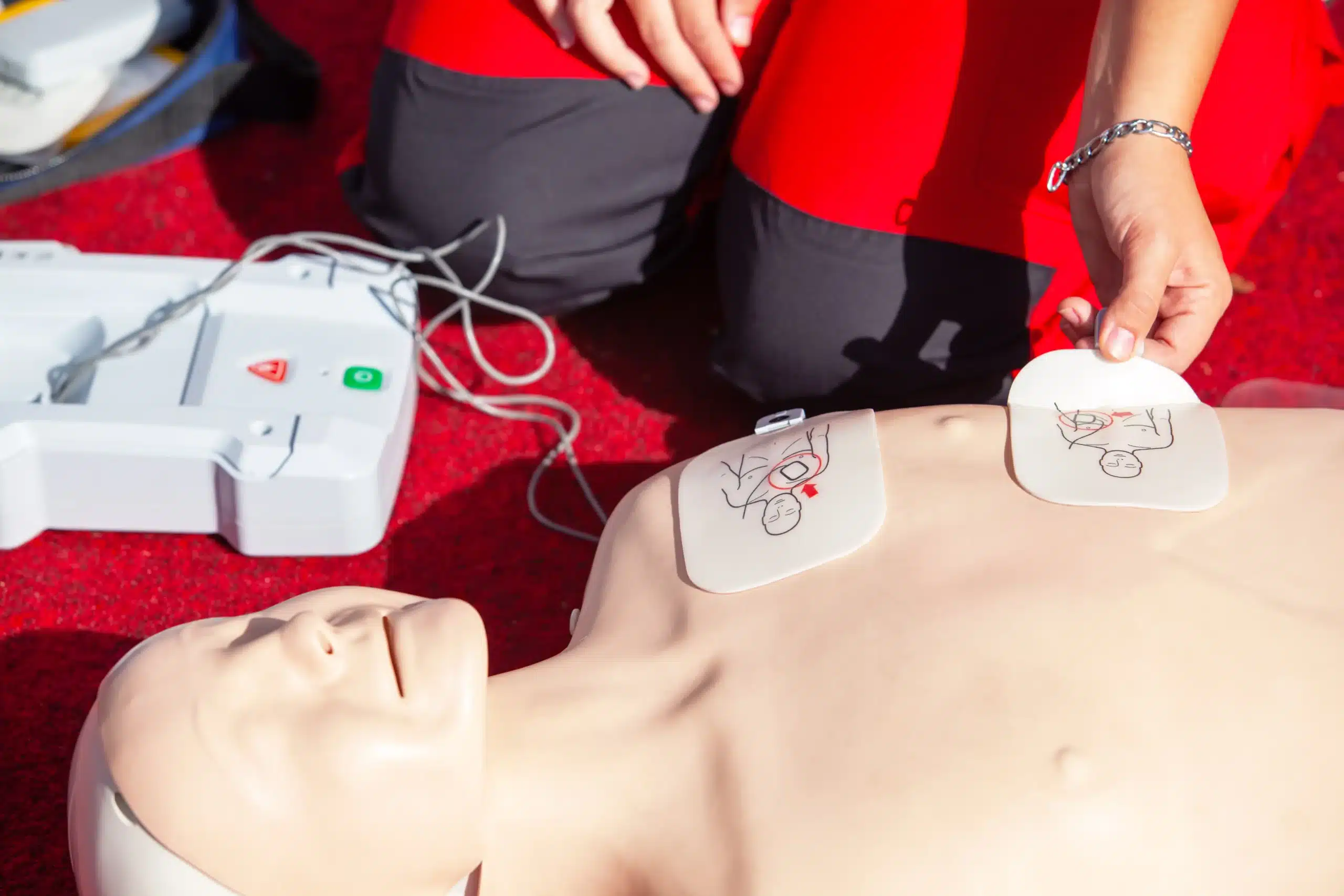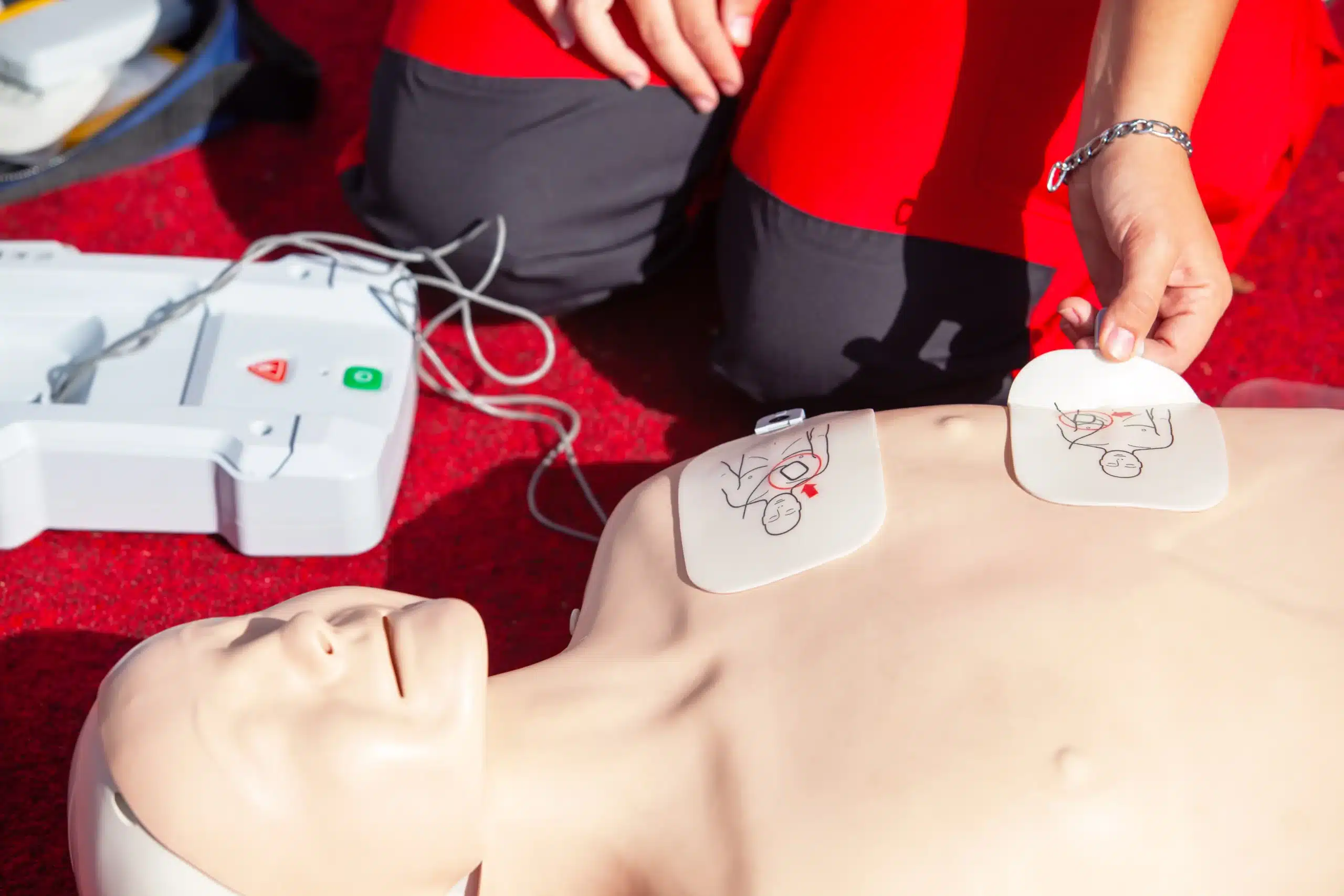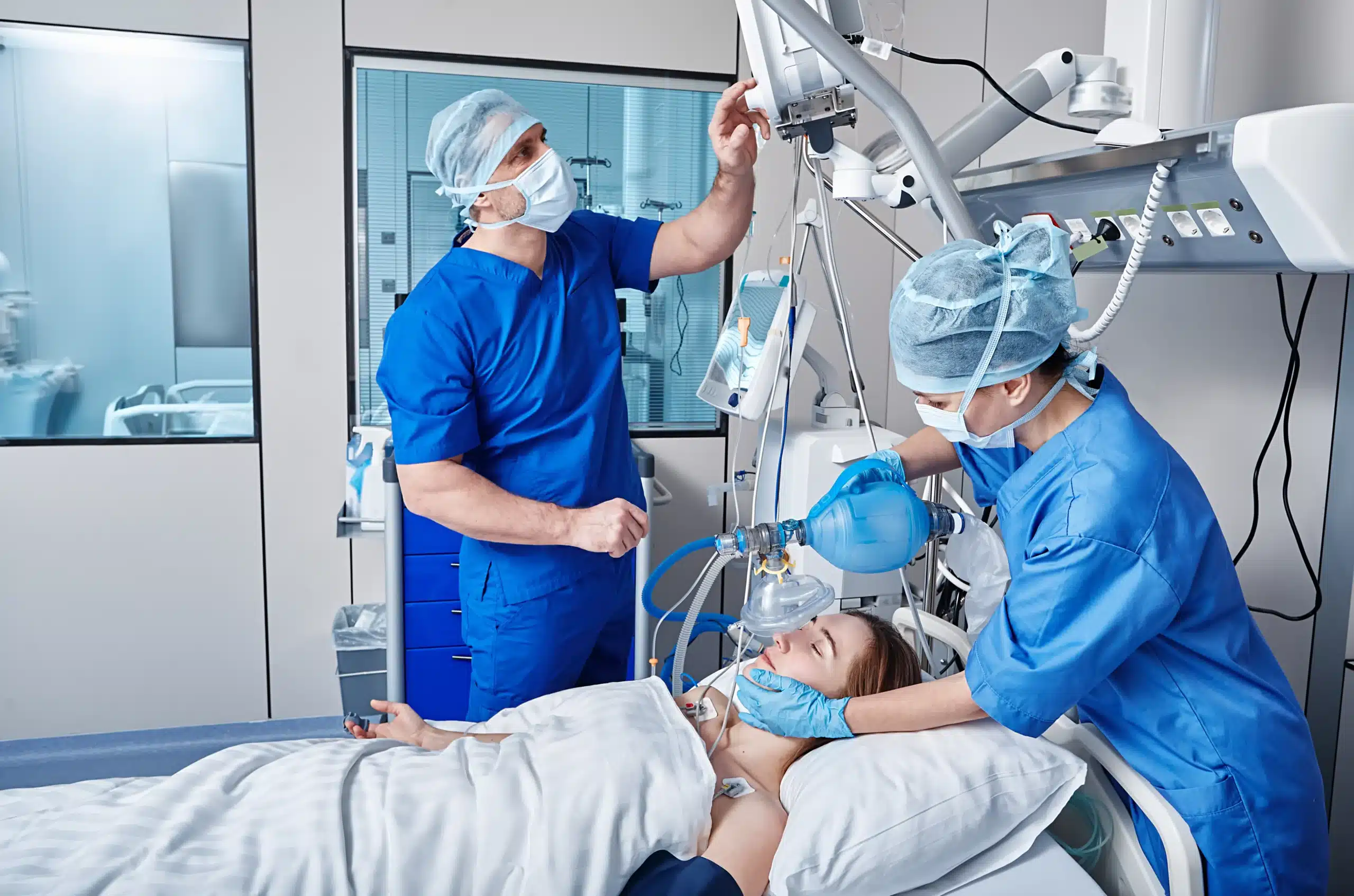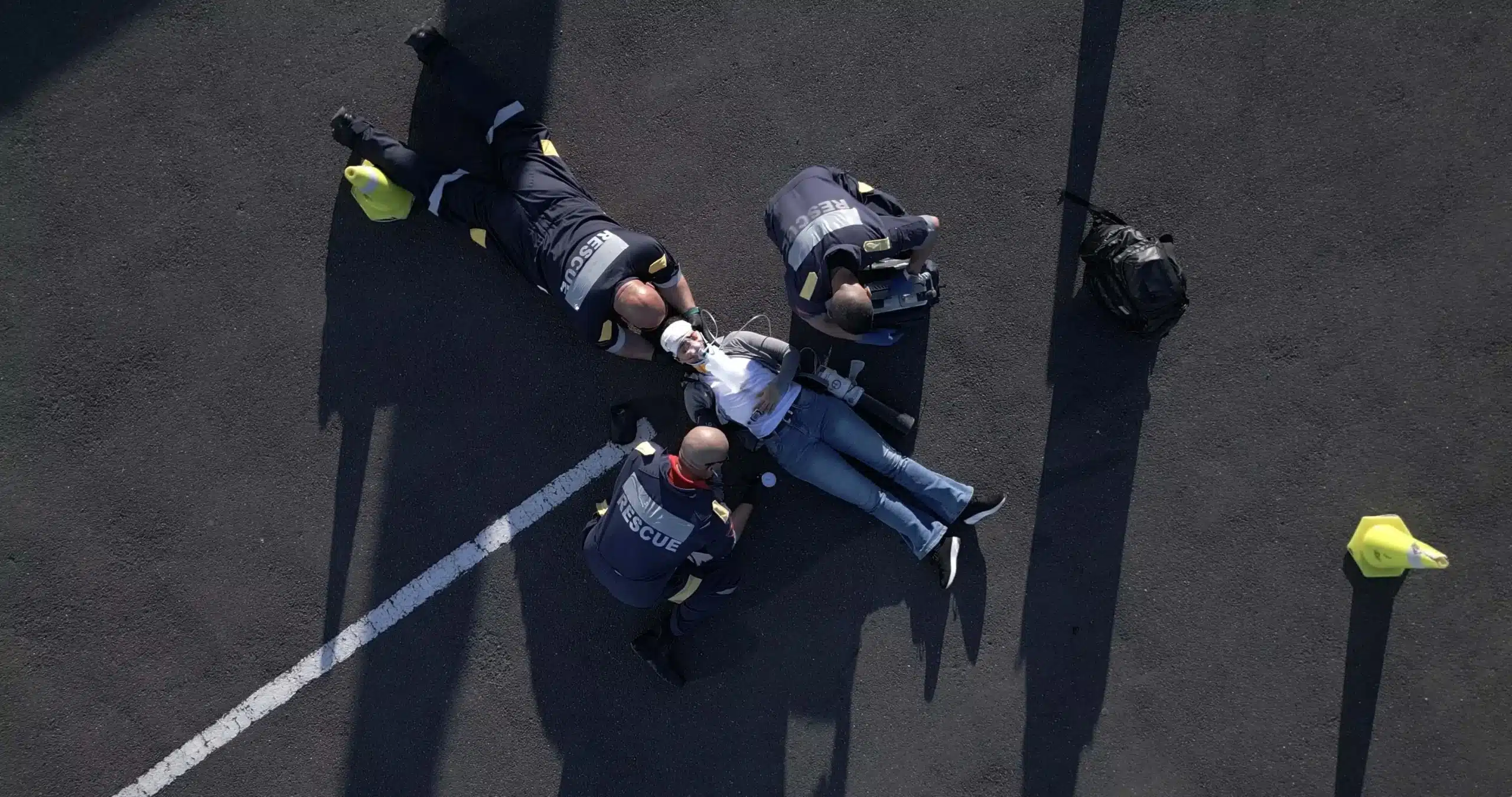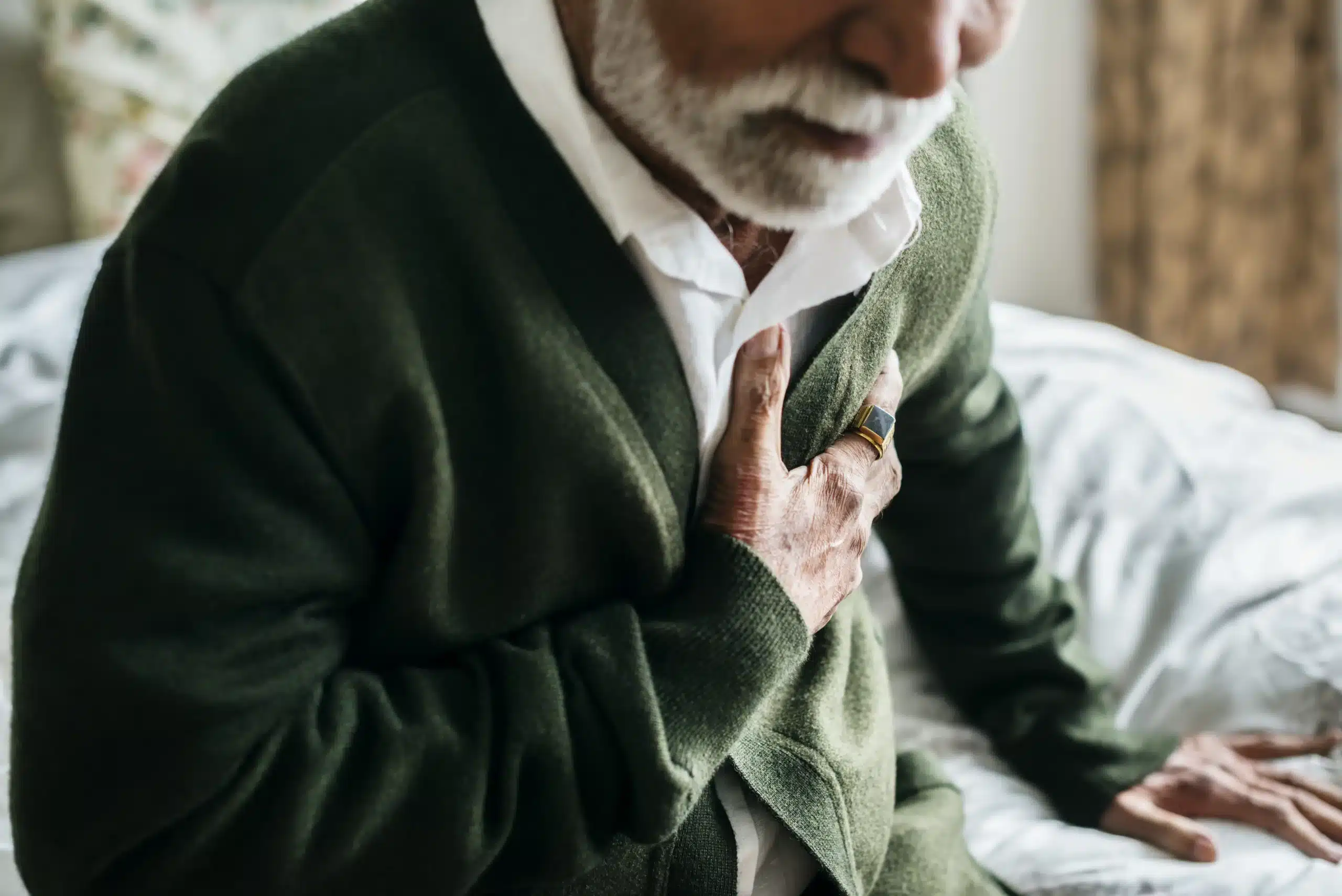In a medical emergency, every second counts. Having the skills to provide immediate assistance can make all the difference. Basic Life Support (BLS) training empowers you to respond effectively in such critical situations. This comprehensive training covers essential life-saving techniques, including CPR, AED use, and how to help someone who is choking. Whether you’re a healthcare provider, work with children, or simply want to be prepared for the unexpected, finding the right BLS classes in Union City is a crucial first step. This guide will walk you through the process of understanding BLS, choosing the right course format, and maintaining your certification. We’ll also explore the various training providers in the area and offer tips for maximizing your learning experience.
Key Takeaways
- BLS certification equips you with life-saving skills. Learn essential techniques like CPR, AED use, and choking relief for adults, children, and infants. Find a course that meets your specific needs and prepares you for various emergency situations.
- Select a reputable BLS training provider. Consider factors such as class format (in-person, online, or hybrid), instructor qualifications, and available resources. San Leandro CPR Classes offers a range of AHA-certified courses with flexible options.
- Maintain your BLS skills through ongoing practice. Regular refreshers and continuing education are vital for retaining knowledge and confidence. Explore convenient renewal programs to stay current with the latest guidelines and best practices.
What is BLS?
What is BLS and Why is it Important?
Basic Life Support (BLS) is a level of medical care used for victims of life-threatening illnesses or injuries until they can receive full medical care at a hospital. First responders, paramedics, healthcare providers, and public safety professionals often perform BLS. BLS certification is a critical component of medical training, giving you the skills and confidence to respond effectively in emergencies. It’s also important for anyone who wants to be prepared to help during a medical crisis. Understanding BLS and its importance can clear up some common misconceptions about this type of training. Knowing BLS can empower you to take action and potentially save a life.
Key BLS Skills
BLS training prepares you to act in emergencies. You’ll learn essential skills like CPR for adults, children, and infants, how to use an automated external defibrillator (AED), and how to help someone who is choking. These skills allow you to confidently respond to various medical crises. BLS certification also covers basic airway management and other important procedures. For healthcare providers, obtaining a BLS certification through the American Heart Association is often a job requirement. Knowing how to perform these skills can truly make a difference in a critical situation.
Find the Right BLS Course
Finding the right BLS course means understanding what each course offers and who it’s designed for. Whether you’re a healthcare professional, a childcare provider, or simply someone who wants to be prepared for emergencies, there’s a BLS course that fits your needs. We offer a range of BLS courses to suit different requirements.
Adult, Child, and Infant CPR Training
BLS training empowers you to confidently respond to medical crises involving adults, children, and infants. You’ll learn essential skills like CPR, how to use an AED, and choking relief techniques. This comprehensive training is crucial for anyone looking to enhance their emergency response skills and be prepared to assist in life-threatening situations. Knowing how to perform CPR on infants and children requires specialized training, and a good BLS course will cover these critical skills. Contact us to find a class that fits your schedule.
First Aid and AED Certification
Many BLS certification courses also include training on using automated external defibrillators (AEDs), basic airway management, and techniques for assisting someone who is choking. AED training is a valuable addition to your skillset, as it enables you to provide immediate assistance during cardiac emergencies. A solid understanding of first aid principles complements your CPR training, allowing you to address a wider range of medical situations. Our BLS courses often incorporate these essential elements.
BLS for Healthcare Providers
BLS for Healthcare Providers is a CPR certification specifically designed for those in the healthcare field. This course covers essential life-saving techniques for various emergencies commonly encountered in healthcare settings. Healthcare providers often face critical situations requiring immediate action, and this specialized BLS training ensures they are well-equipped to handle these situations with confidence and skill. Check with your employer or licensing board to ensure you enroll in the correct BLS course for your profession. We offer BLS for Healthcare Providers to meet these specific needs.
Top BLS Training Providers in Union City
Finding the right BLS training provider is an important step in your certification journey. Here are a few reputable options in and around Union City:
San Leandro CPR Classes
San Leandro CPR Classes offers a variety of American Heart Association (AHA) certified BLS courses, including convenient online options. These courses cover essential lifesaving skills and provide the knowledge you need to respond effectively in medical emergencies. You can learn more about their BLS certification on their website. They also offer group discounts, making it a cost-effective choice for organizations. For those looking for expedited certification, their RQI program is a great option. Check their website for their low price guarantee. You can contact them with any questions.
CPR Education
CPR Education provides CPR and first-aid training in Union City and surrounding areas. As an AHA-certified provider, they offer a range of courses, including BLS CPR, pediatric CPR, and first-aid classes for individuals and groups. Visit their website for more information on their CPR and first-aid training.
Safety Training Seminars
Safety Training Seminars offers comprehensive CPR, first-aid, and advanced life support (BLS, ACLS, PALS, NRP) certification classes in and around Union City. Their courses are taught by AHA-certified instructors and adhere to the standards set by the American Academy of Pediatrics for NRP. Learn more about their CPR certification classes.
In-Home CPR
In-Home CPR specializes in bringing first aid and CPR training directly to your home or business in Union City. With flexible scheduling, including evenings and weekends, they make it easy to find a time that works for you. Explore their in-home CPR training options.
American Red Cross
The American Red Cross offers various BLS certification courses designed for both healthcare professionals and the general public. They focus on clarifying common misconceptions about Basic Life Support to encourage wider certification. You can find more details about their BLS training programs.
What Happens in a BLS Class?
Taking a BLS class is a rewarding experience. You’ll gain essential, potentially life-saving skills and the confidence to use them. Here’s what you can expect at San Leandro CPR Classes:
Course Content and Hands-on Practice
BLS classes cover core life support skills, including CPR, using an automated external defibrillator (AED), and relieving choking. You’ll learn these techniques for adults, children, and infants. The curriculum also emphasizes teamwork, communication, and the systematic approach healthcare providers use in emergencies. Expect a combination of lectures, demonstrations, and plenty of hands-on practice. You’ll work with training mannequins to simulate real-life scenarios, giving you the chance to build muscle memory and confidence in your skills. For more information on our BLS course offerings, visit our BLS page.
Class Length and Certification
A BLS certification course from the American Heart Association typically takes about 4.5 hours to complete. This includes both the instruction time and a written exam, as well as a practical skills test. You’ll need to score at least 84% on the tests to pass. Renewal courses are shorter, clocking in around three hours. Once you pass, your BLS certification is valid for two years. San Leandro CPR Classes offers the RQI program for those needing an expedited certification process. We also offer group discounts to make training more accessible.
Instructor Qualifications
All BLS classes at San Leandro CPR Classes are led by certified American Heart Association instructors. Our instructors’ expertise ensures you receive high-quality training that meets the latest AHA guidelines. Contact us to learn more about our instructors’ experience and qualifications. We’re committed to providing you with the best possible learning experience, and our low price guarantee ensures you’re getting excellent value.
Choose Your BLS Class Format
Finding the right BLS class format is key to successfully learning the material and getting certified. Let’s break down the three main options: in-person, online, and hybrid learning.
In-Person BLS Classes
In-person BLS training empowers you to act in emergencies. You’ll learn essential skills like CPR, AED use, and how to relieve choking, giving you the confidence to respond to medical crises. The in-person format allows for immediate feedback and personalized guidance from the instructor, ensuring you understand the procedures thoroughly. San Leandro CPR Classes offers comprehensive BLS courses covering these essential skills. Hands-on practice and direct interaction with an instructor are invaluable for mastering these techniques.
Online BLS Training
Online BLS classes offer a convenient way to learn lifesaving skills. If your schedule makes attending in-person classes difficult, online training can be a great option. You can study at your own pace and revisit materials as needed. Make sure the program you choose includes a hands-on skills assessment component. This in-person evaluation is essential for demonstrating competency and receiving your BLS certification.
Hybrid BLS Courses
Hybrid BLS courses combine online learning with in-person skills sessions. This blended learning format offers flexibility while still providing crucial hands-on experience. The online modules often use interactive activities and simulations to teach BLS knowledge, while the in-person session allows you to practice under the guidance of an instructor. HeartCode BLS is one example of a hybrid learning program that uses this approach.
BLS Certification: What You Need to Know
Certification Renewal
BLS certification through the American Heart Association is valid for two years. Initial certification courses take about 4.5 hours and include a written exam and a skills test. You’ll need an 84% or higher to pass. Renewal courses are shorter, taking about 3 hours. Knowing your certification’s expiration date is crucial for staying current with your qualifications.
BLS in Healthcare and Emergencies
BLS training equips you to handle emergencies. You’ll learn essential skills like CPR, how to use an AED, and choking relief techniques. These skills give you the confidence to respond effectively in medical crises. Whether you’re a healthcare professional or someone who wants to be prepared, BLS training provides a foundation of lifesaving knowledge.
Common BLS Myths
One common misconception is that BLS training is only for healthcare professionals. This isn’t true. Anyone can benefit from learning these vital skills. BLS certification covers a range of techniques, including using AEDs, basic airway management, and assisting someone who is choking. Another myth is that getting BLS certified requires a huge time commitment. While training does require dedicated time, the benefits far outweigh the investment, especially considering you could save a life. Many training providers offer flexible scheduling to accommodate busy professionals and individuals.
Get the Most Out of Your BLS Class
Getting your BLS certification is a rewarding experience, but how do you make the most of it? These tips will help you prepare for class, retain the information afterward, and understand the value of ongoing training.
Prepare for Your Class
Before your BLS class, take a moment to familiarize yourself with basic life support concepts. Understanding the importance of CPR, AED use, and choking relief will give you a solid foundation for the training. This preparation will allow you to focus on practical skills during the course and ask informed questions. Check out our BLS course page for more information on what to expect.
Remember Your BLS Skills
One of the biggest challenges with BLS training is retaining the information. Studies show that practical skills can decline over time. Focus on truly understanding the techniques, not just memorizing them for the test. Hands-on practice and realistic scenarios during your class are key to remembering these essential skills. Consider taking notes during your training to review later.
Ongoing Training and Refreshers
It’s a common misconception that BLS certification is a one-time thing. While your certification card is valid for two years, regular refreshers are crucial for maintaining your skills and confidence. Think of it like any other important skill—practice keeps you sharp. Check out our convenient RQI program for an expedited way to recertify. This program helps you stay up-to-date on the latest guidelines and best practices.
Cost and Value
BLS certification is an investment in yourself and your community. While there’s a cost associated with the training, consider the invaluable skills you gain. You’ll be equipped to handle emergencies and potentially save lives. We offer a low price guarantee and group discounts to make our training accessible. Contact us to learn more about our pricing and available courses.
Related Articles
- BLS Training in Union City: Your Comprehensive Guide – San Leandro CPR Classes
- BLS Certification in Hayward: Your Comprehensive Guide – San Leandro CPR Classes
- CPR Courses in Union City: Your Certification Guide – San Leandro CPR Classes
- Busting CPR Myths to Save Lives – San Leandro CPR Classes
- Online BLS Classes in Union City: Your Certification Guide – San Leandro CPR Classes
Frequently Asked Questions
What does BLS certification cover? BLS certification covers core lifesaving skills like CPR for adults, children, and infants, how to use an AED, and how to help someone who is choking. It also includes training on basic airway management and other essential procedures. The curriculum often emphasizes teamwork and communication, especially for healthcare providers.
How long is a BLS certification valid, and how do I renew it? A BLS certification is typically valid for two years. Renewal involves taking a shorter refresher course, usually around three hours, and demonstrating your skills are still current. It’s important to keep track of your certification’s expiration date and renew promptly to maintain your qualifications. Some providers offer expedited renewal programs like RQI.
What’s the difference between BLS for healthcare providers and BLS for the general public? While the core skills taught are similar, BLS for healthcare providers often includes a more in-depth focus on teamwork, communication, and systematic approaches used in professional healthcare settings. It may also cover additional skills or procedures relevant to a healthcare environment. Check with your employer or licensing board to ensure you enroll in the correct type of BLS course.
Are online BLS courses as effective as in-person classes? Online BLS courses offer flexibility and convenience, but they should always include a hands-on skills assessment component. This in-person evaluation is essential for demonstrating competency and receiving your certification. While online learning can be a great option for the knowledge portion, the practical skills are best learned and assessed in person.
How can I make sure I remember my BLS skills after I get certified? Focus on truly understanding the techniques, not just memorizing them for the test. Hands-on practice during the course is key for building muscle memory. Taking notes and reviewing them later can also help. Regularly refreshing your skills, even before your certification expires, is the best way to stay sharp and prepared for emergencies.
